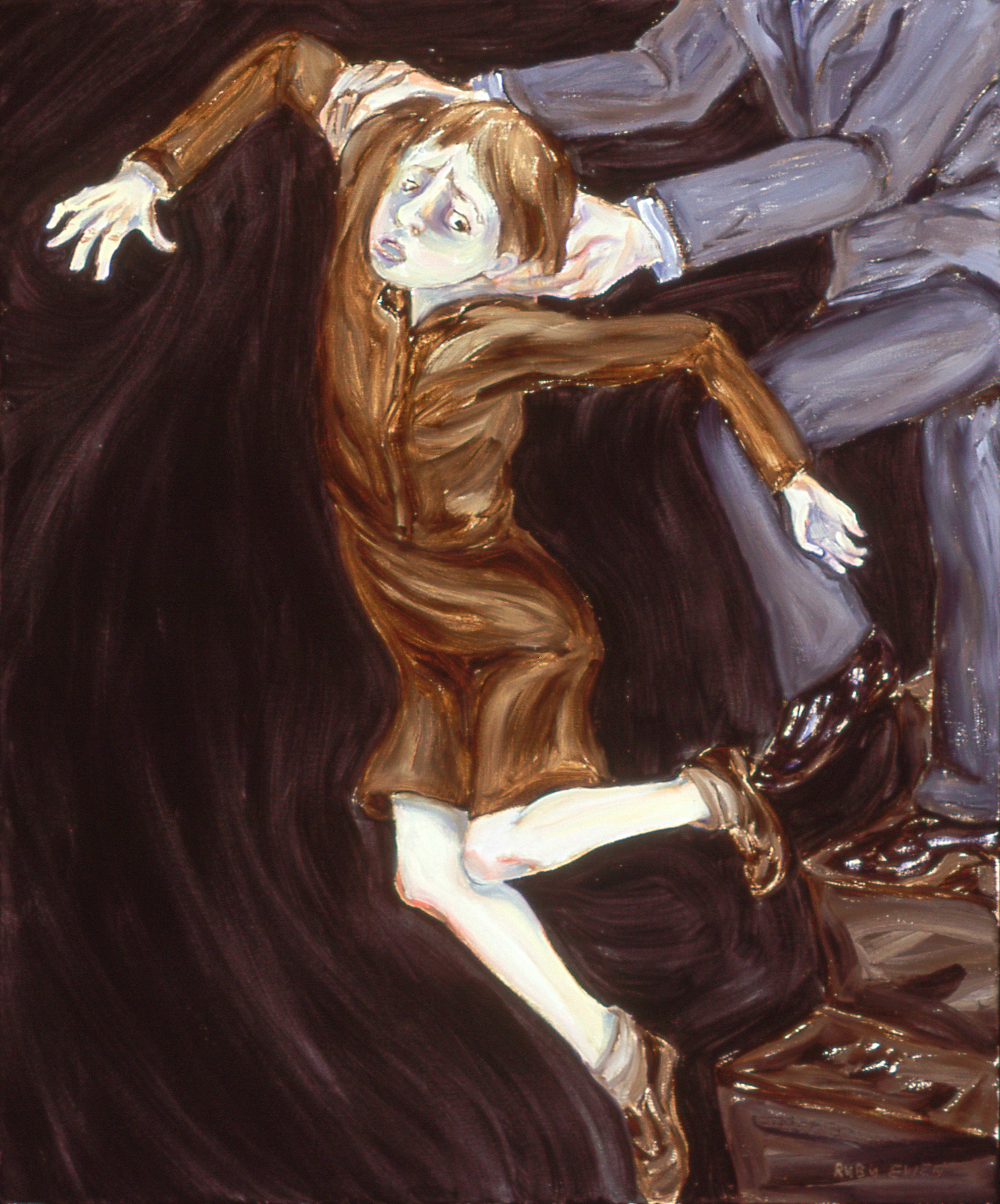“It’s kind of like a punch in the stomach.”
That’s how project manager Julie Hodgson described SAW Gallery’s current exhibit The Bluebird of Happiness. I’m inclined to agree. Walking through the series is like walking through a child’s nightmare.
The Bluebird of Happiness is the work of painter Ruby Ewen.
In the 1950s at age six, Ewen was sent to a Vancouver boarding school.
“I was there for a year and a half and during that time I was abused . . . and was witness to a murder on the grounds of the school of the woman who tried to protect me,” Ewen said.
Ewen said she could have ended up drug-addicted in the Main and Hastings neighbourhood of Vancouver as a result, but she found art.
“I became addicted,” Ewen said. “But to turpentine and paint. And that’s how I was able to live.”
The story is ugly, but the paintings are not. They engage and invite contemplation through spare, often brutal details. One piece simply depicts a few pairs of soiled underwear hanging on a line. Another, called “Point of No Return,” shows the twisted face of a young girl throwing up into a bowl of porridge. It is one thing to see this on its own. It’s another thing to connect that young girl to the real-life Ruby Ewen.
Because of the graphic nature of the display, Ewen and Hodgson arranged for registered counsellors, therapists, and social workers to attend showings and deal with any adverse reactions the exhibit may inspire.
Ewen’s partner, musician Peter Hodgson (Sneezy Waters), said the paintings “illuminate” what he already knew about Ruby. He said he’s proud of her courage.
“Here’s your heroine,” he said, “this little seven-year-old girl being manhandled and bullied and overwhelmed and raped.”
There’s risk in telling such a story, Peter Hodgson said.
“People might just not believe you,” he said.
My favourite piece features a young woman cradling the child version of Ewen in her arms. The woman’s eyes seem to glow yellow. Her hair is made of snakes.
Ewen told me this is the woman whose murder she witnessed, a young pregnant woman who helped care for the children in the dormitories.
“She tried to protect me. So I’ve expressed her in this series as the Medusa. The protectress,” she said. “She has her eyes closed but I’ve also painted them as open. And the story goes that if she looked at you, you’d turn to stone.”
The woman was buried in a wading pool on the grounds. Ewen said she remembers watching the pool being bricked in and turned into a tree planter afterwards.
Years later Ewen contacted a detective who confirmed what she already knew: Yes, the school had existed. Yes, it would have looked exactly as she described it back in the 1950s. Yes, there had been a wading pool, turned into a tree planter.
But the people who ran the school are dead. It’s still privately owned. The grounds have been remodeled and paved over, and the bones of that woman will likely never be found. There’s no one left to accuse or bring to justice. The only person left to remember and tell the story is Ewen. She can’t dig that woman up, so she’s unburied her with a paintbrush and canvas.
After we talked, Ewen hugged me and handed me a clothespin painted with the colors of a bluebird. I left the exhibit pondering the words of the song, which inspired the title of this show.
“And so remember this,” she said. “Life is no abyss. Somewhere there’s a bluebird of happiness.”






